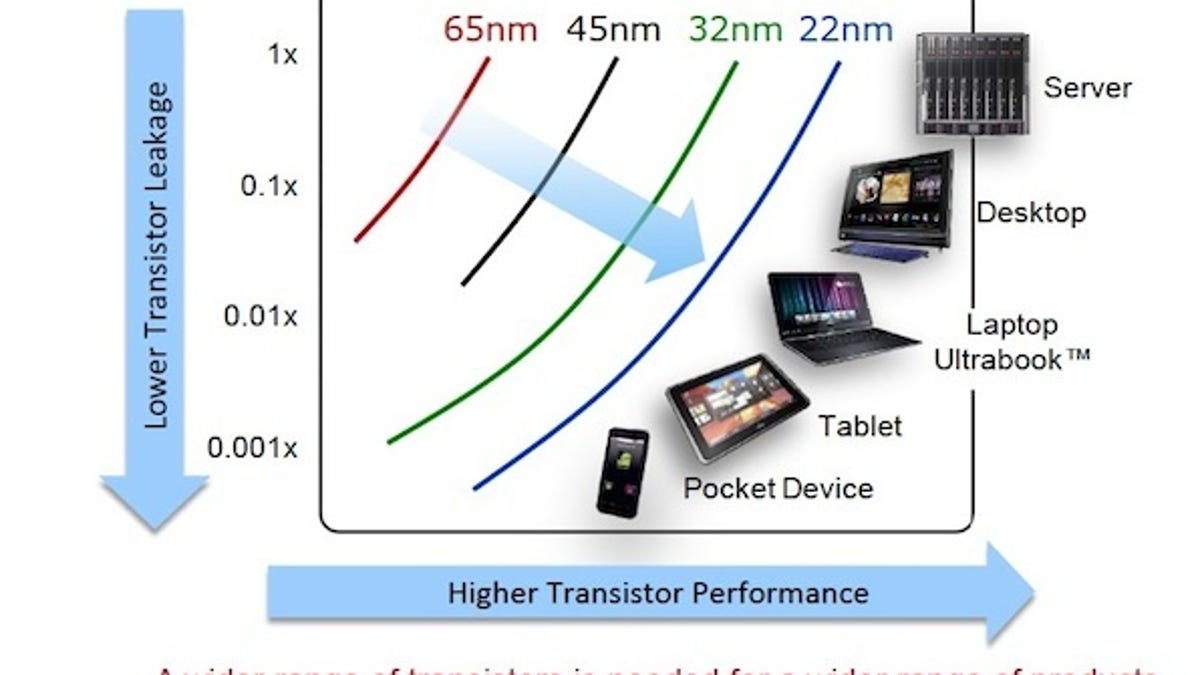Intel discusses shift to system-on-a-chip tech
The chipmaker is putting more emphasis now on system-on-a-chip tech, which is used widely in smartphones and tablets, where the company's largely been absent.

Intel today disclosed technology that it hopes will get more of its silicon inside smartphones and tablets.
At the International Electron Devices Meeting, Intel laid out its next-generation 22-nanometer "SoC" system-on-a-chip technology. An SoC puts most of a device's core functions onto one piece of silicon and is typically used in mobile devices where space and power efficiency are paramount.
"In the past...we were focused primarily on developing transistors with ever higher performance," Mark Bohr, an Intel senior fellow, said to journalists in a teleconference. "Now we're developing technologies with a much wider range of transistors...all the way down to tablets and pocket devices."
Those two devices -- tablets and smartphones -- are sucking up more SoCs every year. That's a problem for Intel because most small devices are based on SoCs from rival ARM.
Intel is applying its 22-nanometer "Tri-Gate" 3D chip technology to SoCs for the first time. That newer 3D tech outperforms current 32-nanometer SoCs by 20 percent to 65 percent, Intel said.
Though 22-nanometer Tri-Gate tech is inside mainstream Ivy Bridge processors today -- widely used in Windows and Apple laptops -- it hasn't made it into Intel SoCs, which always lag Intel's PC-centric processors.
Current Intel SoCs still use older 32-nanometer technology. Those SoCs include the Clover Trail chip being used in Windows 8 tablets and the Medfield chips adopted for Motorola and Lenovo smartphones, among other devices.
As today's announcement is limited to production technologies -- not specific chips -- Intel made no mention of which future SoCs will tap the 22-nanometer Tri-Gate tech.
But one candidate is expected to be a design code-named Silvermont, according to Nathan Brookwood, principal analysts at Insight 64. It's rumored to be a redesign of the Atom chip architecture.
The 22-nanometer SoC technology will be ready for high volume manufacturing in 2013, Intel said.

